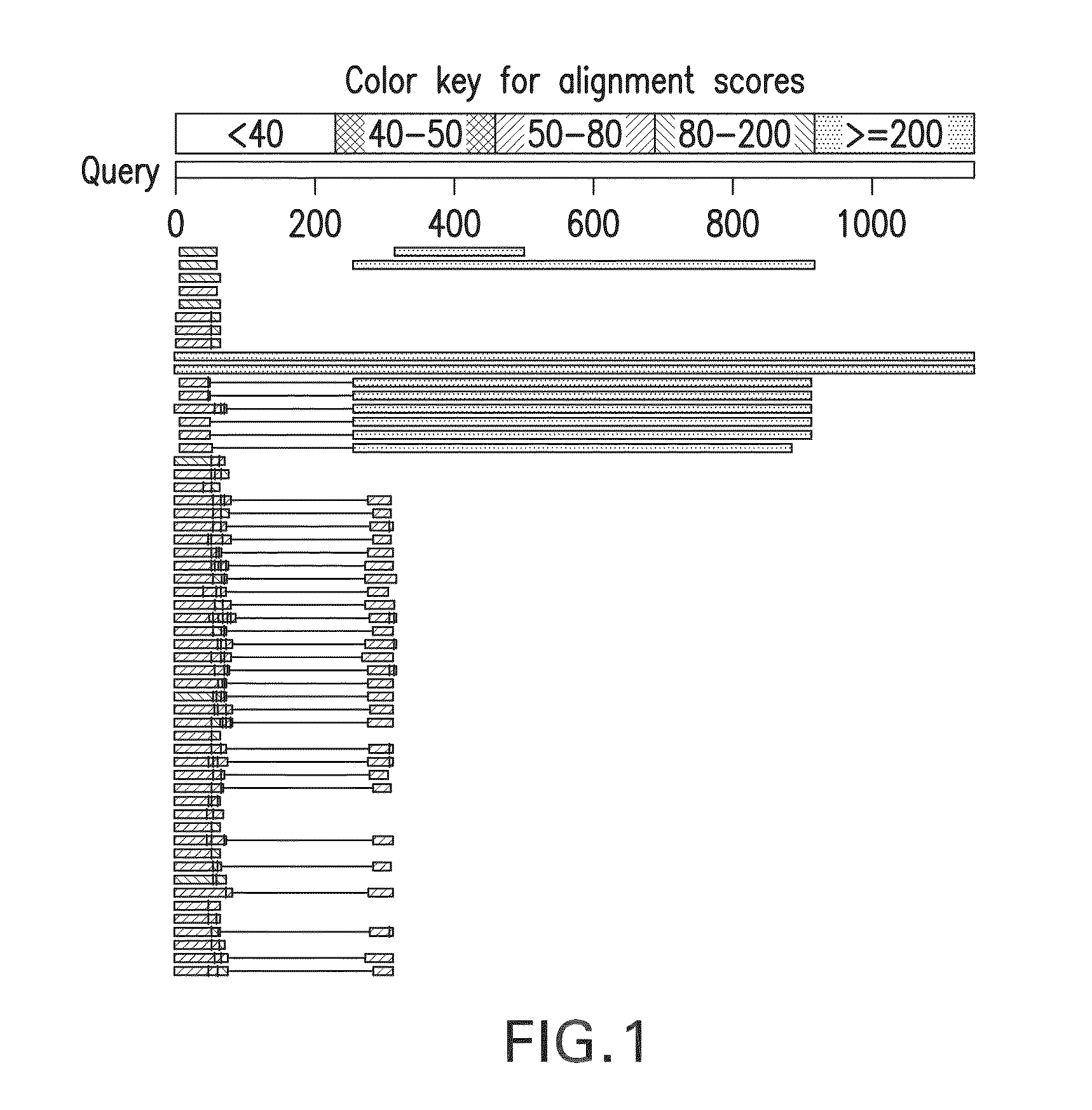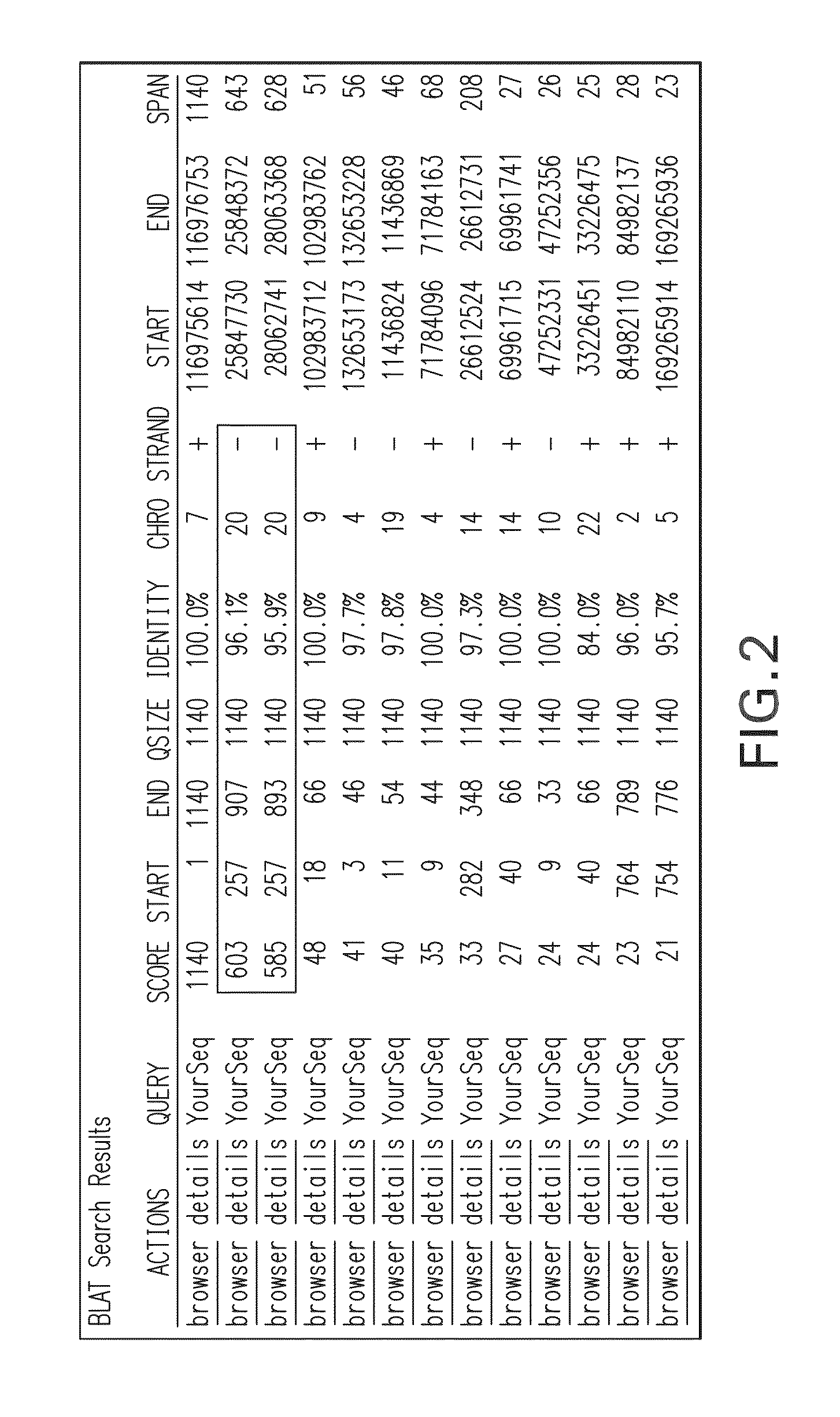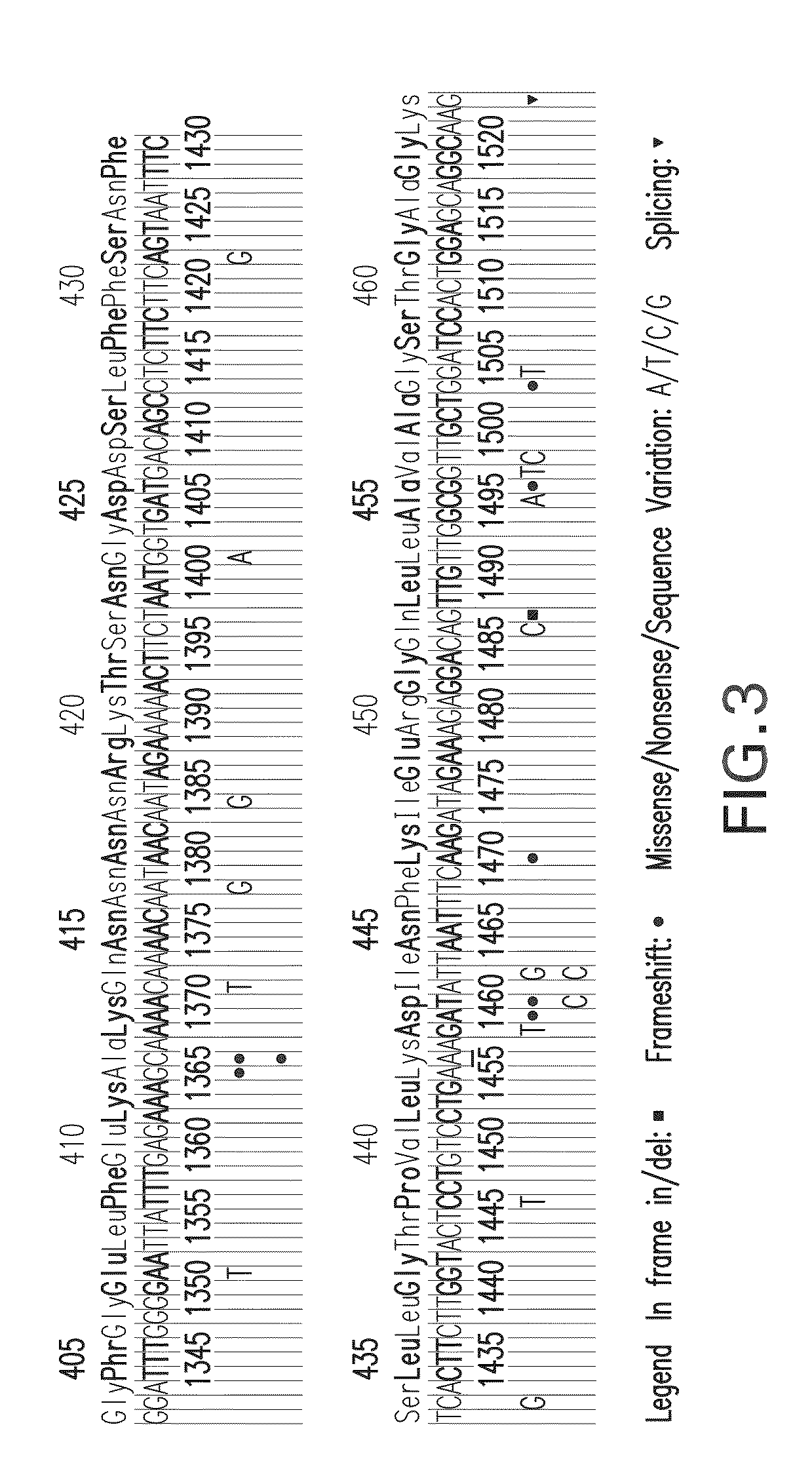Mutation detection in highly homologous genomic regions
a genomic region and highly homologous technology, applied in biomass after-treatment, specific use bioreactors/fermenters, biochemistry apparatus and processes, etc., can solve the problems of limited difficult to genotype small insertions or deletions with the small amplicon method, and labor-intensive use of these techniques, so as to achieve high resolution thermal melting curves and minimize amplicon size
- Summary
- Abstract
- Description
- Claims
- Application Information
AI Technical Summary
Benefits of technology
Problems solved by technology
Method used
Image
Examples
example 1
[0112]The present invention takes into consideration the design of primers to differentiate exon 9 of the CFTR gene from other homologous sequences on the human genome. The advantages of using an unlabeled probe method for detecting the mutation of Exon 9 A455E can be essential. The method according to an embodiment of the present invention differentiates exon 9 of the CFTR gene from other homologous regions on the human genome by locating the forward primer in the heterologous region on intron 8 junction region and to identify the mutation of A455E using an unlabeled probe. This embodiment of the present invention provides a convincing result for the A455E detection, as well as avoiding the pesudogene errors.
[0113]The present invention provides a unique and convincing methodology for mutation identification, including as to a sequence that includes A455E on exon 9 and its junction intron 8 region that differentiate exon 9 from the homologous regions, which is performed using an unl...
example 2
[0126]In addition, synthetic DNA (described further below) was used in this assay as a further check on its accuracy. 600 bp of synthetic DNA contained the exon 9 region, and the only base-pair change contained in that design was a homozygous change from C to A. This DNA is expected to produce a single probe melt peak corresponding to the lower temperature heterozygous DNA peak. Experimental data (FIG. 8) showed that all DNAs genotype as expected. Each observed probe peak corresponds to the expected probe peak.
example 3
[0127]The new primer set design was further tested to scan for the exon 9 1461ins4 mutation. Genomic wild-type DNA and synthetic construct DNAs harboring the mutation were both tested. Briefly, the constructs consist of an approximately 600 bp sequence inserted into a pGOv4 plasmid vector (FIG. 9). The plasmid was replicated by the E. coli host cell, and the host cells were easily grown as needed. Plasmids were purified from the host. Plasmid inserts were designed to have either wild-type sequence or sequence containing a homozygous mutation (FIG. 9). After the plasmids were extracted and purified from the host, wild-type plasmids and homozygous plasmids were mixed together in a 1:1 ratio to produce a heterozygous construct DNA mix.
[0128]A different primer design (other than the one described above in accordance with one embodiment of the present invention) was initially used. The primers that were used have the sequences TGGGGAATTATTTGAGAAAG (SEQ ID NO:8) and CTTCCAGCACTACAAAC TAGA...
PUM
| Property | Measurement | Unit |
|---|---|---|
| Temperature | aaaaa | aaaaa |
| Size | aaaaa | aaaaa |
| Fluorescence | aaaaa | aaaaa |
Abstract
Description
Claims
Application Information
 Login to View More
Login to View More - R&D
- Intellectual Property
- Life Sciences
- Materials
- Tech Scout
- Unparalleled Data Quality
- Higher Quality Content
- 60% Fewer Hallucinations
Browse by: Latest US Patents, China's latest patents, Technical Efficacy Thesaurus, Application Domain, Technology Topic, Popular Technical Reports.
© 2025 PatSnap. All rights reserved.Legal|Privacy policy|Modern Slavery Act Transparency Statement|Sitemap|About US| Contact US: help@patsnap.com



